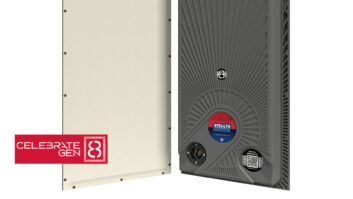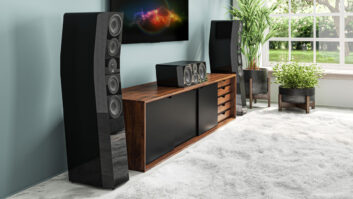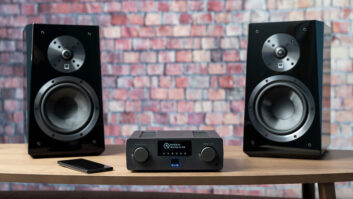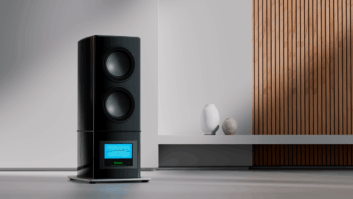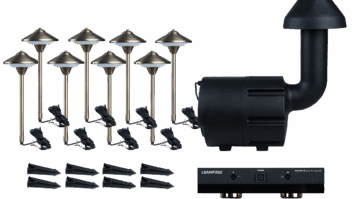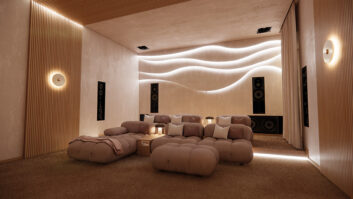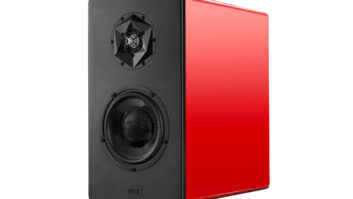Kudos: Great sounding, instant audio system; a powerful in-wall sub you can count on; SVS app lets you dial-in sub’s performance
Concerns: Play-Fi (but you don’t need to use it)
While most other audio companies have ditched the Consumer Electronics Show, SVS has continued showing up, actually having a working booth on the show floor this year. To show my appreciation, I always carve out time to make it to their booth (or suite in the Venetian Towers in years past), and in return I am rewarded by getting to see and often hear the company’s latest products.
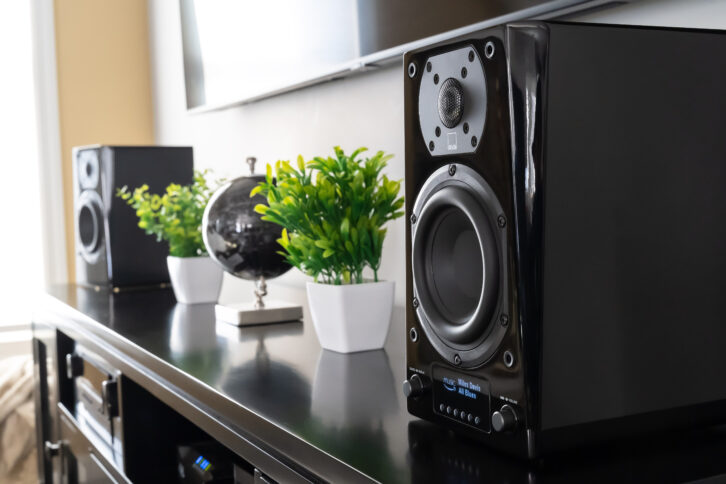
Back at CES 2022, SVS debuted two upcoming products: an upgraded version of its Prime Wireless speakers and the company’s first in-wall product, the 3000 In-Wall Subwoofer. Knowing SVS’ reputation for delivering incredible performance and value, I let them know that I wanted to review both products as soon as possible.
Fast-forward to 2023, and these products are now both available and shipping, and were definitely worth the wait!
Prime Wireless Pro Speakers
The Pro clearly traces its design and feature DNA back to the original Prime Wireless Speaker, but following on the great American theme of “bigger is better,” the Prime Wireless Pro is indeed bigger and, well, better. Besides being slightly larger in all dimensions and heavier by nearly three pounds, it also features several other improvements and updates that make it a more competent and capable speaker system.
Where the original Prime Wireless could be purchased as a single, with stereo pairing optional, now stereo is the only way it comes.
According to SVS’ president, Gary Yacoubian, “The sound quality that we’re bringing with Prime Wireless is unprecedented in the wireless space. We have stereo speakers instead of a single small speaker…[to] create a full-on, three-dimensional soundstage that one would expect from a reference-quality high-performance speaker.”
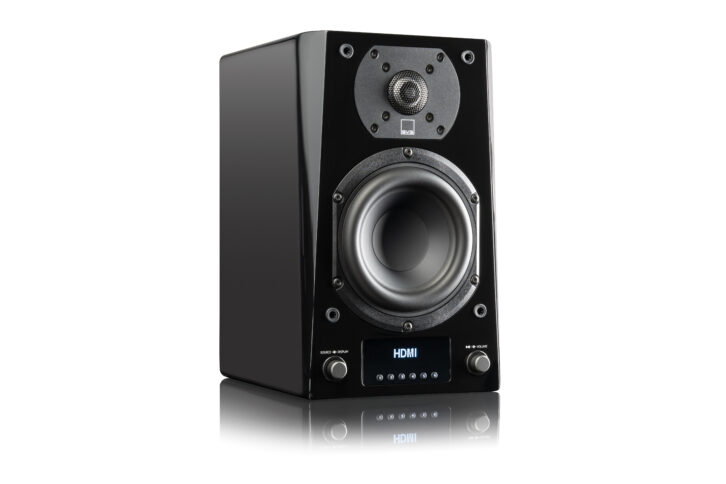
As a reviewer, I like to humor myself by thinking that manufacturers might actually listen to the suggestions I posit in reviews, and whether that is the case or not, SVS implemented my suggestions and addressed my (albeit minor) criticisms of the first Prime. For one, there is now a 3.15-inch-wide front-panel OLED display that not only shows the volume level, but also the input and scrolling metadata of what is currently playing. For another, the constantly blinking, bright blue, Bluetooth light has been darkened.
If you don’t love the Play-Fi control app (raises hand), the Pro now includes Apple AirPlay 2 and Chromecast (along with retaining Bluetooth 5.0 with AAC and aptX), meaning you can beam music to it in your preferred manner. It also features an eARC-capable HDMI input so you can more easily connect a display to make this more video-friendly. SVS now includes a handheld remote, which makes quick volume adjustments much easier without needing to pull out your phone. Finally, the bigger driver and cabinet volume also mean more bass, but more on that later.
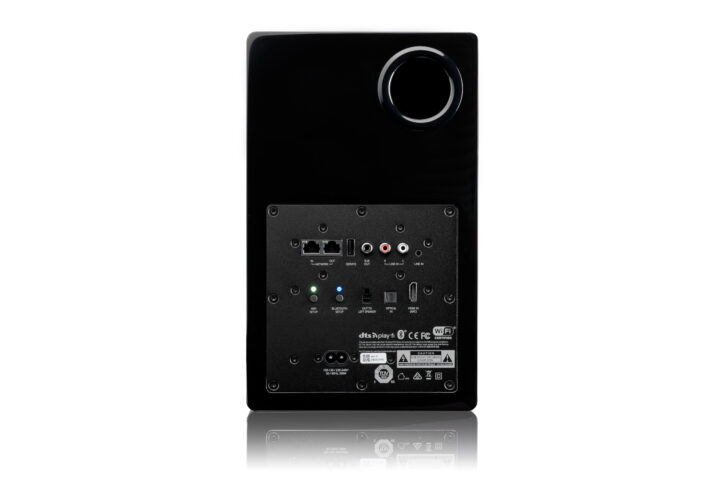
Visually, the speaker is mostly unchanged save the new OLED display and is still available in the same piano gloss black and white finishes. After years of black speakers coming through my house, I’m digging on the white finish, finding it modern, clean, and cool.
3000 In-Wall Sub
The old adage is to stick with what you know, and it makes perfect sense that SVS would go with a subwoofer for its first in-wall offering, as subwoofers are what launched the company. SVS also spent a lot of time working to get the performance right before bringing this to market, and the results speak — or, more accurately, thump — for themselves.
Historically, I’ve not been really impressed with in-wall subwoofers, and I generally try and talk customers out of them unless there is really no other placement option. (Granted, I know there are some terrific ones on the market, like JL Audio’s in-wall Fathom, but those aren’t retro or budget-friendly.)
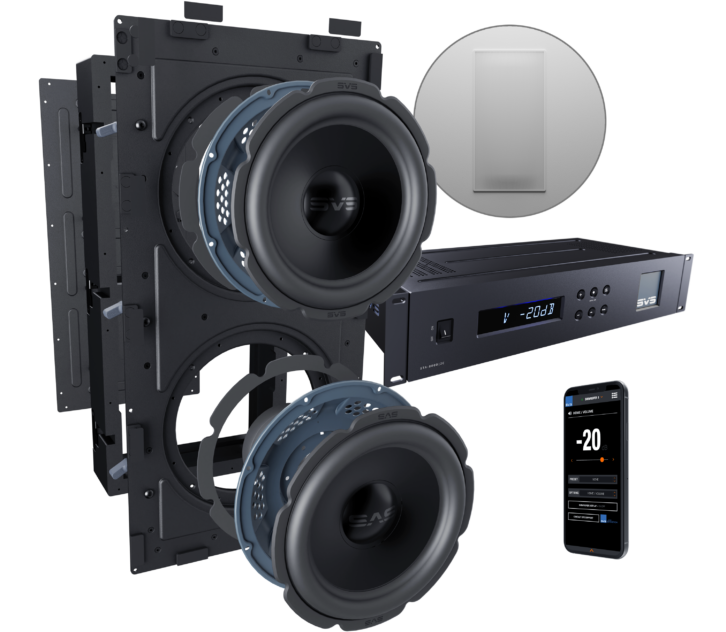
From the moment SVS’ marketing guru, Nick Brown, fired it up at CES in 2022, I knew the 3000 was an in-wall offering that ticked all the boxes, producing real, tactile bass that energized the room without requiring an additional enclosure and able to install — or retro — in a standard 2×4 wall cavity.
The subwoofer includes a Sledge STA-800D2C amplifier that delivers 800 watts RMS (2500+ watts peak) and is capable of powering up to two subwoofers. (A second 3000 sub can be purchased á la carte.) Like most of SVS’ recent offerings, the sub amp is compatible with the company’s control app and includes parametric EQ for fine-tuning the performance in your room, but more on that later as well…
Play-Fi
I’m not going to exactly call Play-Fi the red-headed stepchild of the wireless streaming world, but let’s just say it’s not as popular as Sonos, HEOS, or Bluesound.
Play-Fi was originally developed by Phorus in 2010; Phorus was acquired by DTS (yes, the digital surround people) in 2012; and DTS in turn was acquired by Xperi in 2016. Throughout these changes, Play-Fi has seen continued and steady updates and improvements, and it has definitely gotten better.
One of Play-Fi’s biggest selling points is that it is brand-agnostic and can be licensed by any manufacturer, and all Play-Fi-enabled products are able to work together in a system. This means that users can purchase the speaker/electronic brand(s) they prefer and tailor the performance needs by area. Some current Play-Fi partners include Anthem, Arcam, Definitive Technology, Dish, Integra, Klipsch, MartinLogan, McIntosh, Paradigm, Pioneer, Polk Audio, Rotel, and SVS.
I’ve reviewed a variety of Play-Fi products dating back to 2014, and, while it has definitely improved, especially with the addition of Critical Listening Mode that supports 24/192 high-res audio, as well as the addition of more music services, I still don’t love it. Things like music stopping during phone calls or if other audio starts playing on your device are just a bummer. (Fortunately, there is now a transfer function that lets you offload the music from your device to the speaker, meaning you are free to go about using your phone however you’d like — including walking away with it — with no interruption to the music.) Honestly, I often just found myself kind of fighting with the app trying to get to where or what I wanted it to do.
Regardless your feelings towards Play-Fi, remember that the Pros also support Chromecast, Airplay 2, Spotify Connect, and Bluetooth — meaning you have options and can use whatever works best for you.
Setup
The right Pro speaker features all the connections and amplification, using 4×50-watt amplification to bi-amp the drivers in both speakers, so it requires connection to power. It connects directly to the left, passive speaker via an included 10-foot premade speaker cable. (SVS sells 15- and 20-foot versions if needed.) The right speaker also includes inputs for external audio connections, including RCA and mini-jack analog, Toslink optical digital, HDMI supporting eARC, and a single RCA output for connecting a subwoofer. There is also an RJ45 Ethernet in and out connection if the speaker can be hardwired.
You’d expect a speaker with “Wireless” in its name to offer Wi-Fi, and the Pro handles both 2.4 and 5 GHz frequencies. There are also Bluetooth and Wi-Fi setup buttons. A single USB connection is labeled “Service,” but it can charge a device or power an accessory such as SVS’ SoundPath Wireless Audio Adapter to transmit sub signals if running a cable isn’t possible.
The right speaker’s front panel includes two knobs, six small preset buttons, and a new OLED display. The right knob rotates to adjust volume and presses in to play/pause music, while the left knob rotates to cycle between inputs.
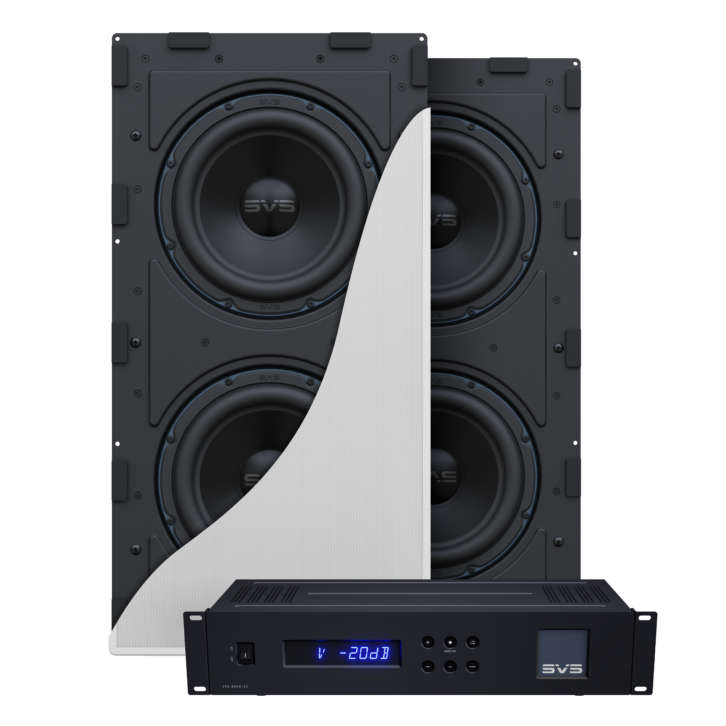
While the previous Prime speaker also offered six presets, they were a bit more clunky to access. The direct access buttons make these far more accessible, giving you a kind of one-touch-to-music. When something is playing, press and hold the Preset button on the speaker or remote for a couple of seconds and it will save the entire playlist, channel, album, etc. that you were listening to for fast recall. Even better, once a preset is saved, you don’t need to pull out a phone to recall it. Just press the Preset button and within a few seconds, music starts. This is such a fast and great way to get music started, it almost guarantees you’ll listen to more music.
On the driver side, the Pro retains the same 1-inch aluminum dome tweeter found on SVS’ flagship Ultra Towers and used on the previous Prime speakers, but steps up to a 5.25-inch Polypropylene cone mid/bass driver and a slightly larger flared port on the rear to increase bass response. The result is this speaker plays down to 42 Hz, a full 10 Hz lower than the previous models, making for noticeably fuller sound.
At just over 25 pounds, and with dual 9-inch drivers and solid cabinetry bracing and aluminum front and rear panels, the 3000 In-Wall Sub feels like it means business straight from the box. Installation is very straight forward, and no different than installing a really large in-wall. (SVS offers a pre-installation bracket for use during new construction, and they said there’s no reason why it couldn’t also be used in-ceiling.) I used the included template to trace the cutout on my pre-fabricated speaker-testing wall and then cut in the hole and locked down the six dog-ears. Since the speaker is 12 inches wide, you have a bit of space on either side in a standard 16-on-center wall, where you can route the speaker wiring. Once the hole is cut, you simply connect a set of speaker wires that run back to the amplifier.
This 2U rack-mountable (ears included) amplifier offers a pair of RCA inputs and outputs, as well as two sets of five-way speaker binding posts for connecting up to two 3000 subs. There is also a 12-volt mini-jack trigger input, as well as a USB connection for service.
Smartly, SVS made the subwoofer connection on the Pro’s auto-sensing, and the speaker automatically engages an 80 Hz low-pass filter when a sub is connected, letting you quickly demo the speakers with and without sub and requiring no additional setup out of the box to get the combo working.
Room Correction
Out of the box, the sub amp defaults to a volume level of –10 dB, and once I powered everything up and started playing some music, the sub was really loud and boomy at my seating position, with certain bass notes being just overwhelming. I quickly lowered the sub’s volume to –20 dB and that made for a ton of improvement, but it was still really boomy, which highlights one of the challenges of using an in-wall subwoofer.
With a traditional, freestanding sub, I’d just have moved it to a new location until it was better integrated. However, that option is pretty much off the table once you cut that big hole into a wall. The issue was exacerbated in my room because the location of my speaker testing walls was more optimized for listening to in-wall speakers, not an in-wall sub.
Now, if this had been part of a traditional home theater system, I could have just run whatever flavor of room correction was on board and hoped it would handle the problems at my listening position. But, as I was just testing this with the Pro speakers, there was no on-board correction to turn to.
What to do?
Well, for years, SVS has made their subwoofers compatible with its iOS and Android control app, and within the app there are three parametric EQs — and separate presets — that can help you finetune the sound in your room.
In order to really take advantage of these tools, you need to have a way of testing and measuring what is happening in the room, and this is where I turned to Room EQ Wizard (REW) and miniDSP’s $79 calibrated UMIK-1.
With this potent combo, I was not only able to take close-mic’d measurements of both the subwoofer and speaker (which verified SVS’ performance claims, btw) but I could see exactly how the subwoofer and speakers were interacting in my room at my listening position.
And when I first measured the combo, I was getting a massive 20 dB spike at 45 Hz; no wonder it sounded boomy! There was also little output below 35 Hz.
With the phase, level, and parametric EQ adjustments available in the app and sub amp, I was able to measure and adjust (and remeasure and readjust…) until I achieved a near-perfect tracking of the sub’s close-mic’d in-room response, resulting in smooth and powerful bass across the speaker combo, down to 25 Hz at my listening position.
This is an incredibly powerful feature that separates SVS’ subwoofers from nearly every competitor, and it is definitely something that will help you maximize performance.
Performance
I did a lot of listening to the Pros both with and without the subwoofer, both in my home listening room and at my custom showroom, and you very quickly stop thinking of this as a wireless speaker system and just thinking of it as a really good 2-channel speaker package.
I had a pretty good idea of the sound to expect from my time with the original Prime speakers, and the new Pros just built on that. The detailed mid-bass and tweeter extension was still there, letting you hear the fine cymbal strokes in Art Blakely’s “Yama” or appreciate dynamics in Michael Hedges Aerial Boundaries, however, what I really noticed was the deeper bass extension from the larger drivers, making music sound fuller and richer, delivering what you’d expect from a premium bookshelf speaker system.
While I found the original Prime’s 52 Hz bass extension a bit lacking, here the Pros dig deep enough to be pleasing and impactful all on their own, and I fed them a pretty bass-heavy diet to check out what they could do. There is definitely enough low end to handle double bass notes found in jazz, but also enough to handle things like the TRON: Legacy soundtrack by Daft Punk, which is filled with some big electronic bass, and “Wow” by Beck, which also features some deep synth bass notes. Regardless of the music, the Pros certainly produced enough on the bottom end to sound room-filling.
Unlike the original Primes, the inclusion of an HDMI input with eARC invites you to connect your TV to the speakers, making them an argument as a soundbar replacement. One of my biggest complaints with most soundbars is that the soundstage is almost always limited to the width of the bar, but the Pro’s 10-foot cable provided enough separation to deliver terrific stereo performance while also producing wonderful imaging and soundstage. With the Pros connected, audio extended well left and right of the screen, making for a more cinematic experience, while still keeping voices anchored in the center.
But it was while watching movies when I noticed that the low end didn’t really extend as deep and powerfully as I’d like, and this is where adding the 3000 made the greatest contribution. With the 3000 in the mix, you could actually feel the low end, making the system sound far more cinematic.
With music, adding the sub was a case of suddenly noticing a lot more of that deep bass and heft to the soundtrack. While it certainly sounded better with the sub, you didn’t really notice how much you were missing until it was there (or taken away). But with movies, the 3000 was like a system force multiplier. Explosions and impacts had far more power and punch, giving a tactile experience. But even in scenes that weren’t overly dynamic, the 3000 brought in a low background rumble and thrum of machinery or other sounds that just created a more believable sonic atmosphere and added more depth to the landscape.
Even in its non-ideal location in my room, after calibration the 3000 delivered bass that never failed to impress or called attention to itself in a negative way.
SVS has proved time and again that they are able to deliver terrific performance at reasonable pricing. At $900 for the pair, the Prime Wireless Pros are a great value considering it is an out-of-box, fully working system, including streaming, inputs for external sources, and amplification that would make a terrific bedroom or office solution. The highest praise I can lay on the 3000 In-Wall Subwoofer is that I am already spec’ing it into projects. At $3000 for the dual-subwoofer system, you’ll get bass that is deep and powerful but that won’t take up an inch of space in the room, and that’s a win all around.
877-626-5623; SVSOUND.COM
Product Specs
Prime Wireless Pro
- DTS Play-Fi app (iOS and Android) supports Spotify (Connect), Amazon Music, Audacy, Deezer, iHeartRadio, Internet Radio, Napster, Pandora, Qobuz, SiriusXM, SoundMachine, Tidal, and TuneIn
- DLNA media server streams MP3, M4A, AAC, WAV, and FLAC up to 192/24 (in critical listening mode)
- Apple Airplay 2, Chromecast, Bluetooth 5.0 with AAC and aptX
- Dual-band 2.4 and 5.0 GHz 802.11g/n Wi-Fi; Ethernet LAN connection
- 1-inch aluminum dome tweeter and 5.25-inch polypropylene mid-bass driver; rated 42 Hz–25 kHz (±3 dB)
- Powered speaker features 4×50-watt Class D amplification to discretely amplify all drivers in both speakers
- Six custom presets allow quick access to favorite playlists without needing a phone/tablet
- Connections (Powered Speaker): Inputs: RCA stereo and 3.5mm analog audio, Toslink optical, RJ45 Ethernet, HDMI supporting eARC, USB (service and device power), Power Outputs: RJ45 Ethernet, RCA subwoofer, 4-pin connection to passive speaker
- Dimensions (Active Speaker): 11.61 x 7.09 x 8.96-inches (HxWxD); Weight: 12.3 pounds
3000 In-Wall Subwoofer
- Dual 9-inch high-excursion drivers
- Ultra-rigid aluminum and MDF cabinet with braced 2.5mm thick aircraft grade aluminum front and rear panels for maximum acoustic output
- Rated 22 – 250Hz (±3 dB); in-room low frequency 19Hz
- Sledge STA-800D2C amplifier delivers 800 watts RMS, 2500+ watts Peak; capable of powering up to two subwoofers
- High-resolution 50 MHz Analog Devices DSP with double precision 56-bit filtering for advanced control
- SVS subwoofer DSP and Bluetooth BLE smartphone control app for iOS, Android, and Amazon devices allows custom tuning and user presets
- In-Wall Cabinet Dimensions: 25 x 12 x 3.74-inches (HxWxD); Weight: 25.5 pounds
